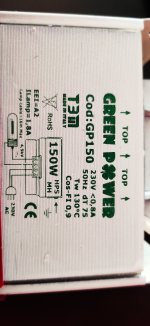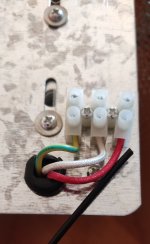GrayZone
Member
I haven't done this for a loooong time, so I forgot a thing or two.
There is the ground connector on the ballast and the socket(see the attachment). I don't think that 15ish years back I had ground on those old-school ballasts, so I'm not sure what to do with this.
Should I connect the ballast ground connector with the socket one? Or just leave it without ground? Someone told me "you have ground in your house you don't need to ground it". Is that correct?
Also, please see the wire I'm holding next to the socket connector. As far as I can remember and figure out, it should be fine(as in not too weak), correct?


There is the ground connector on the ballast and the socket(see the attachment). I don't think that 15ish years back I had ground on those old-school ballasts, so I'm not sure what to do with this.
Should I connect the ballast ground connector with the socket one? Or just leave it without ground? Someone told me "you have ground in your house you don't need to ground it". Is that correct?
Also, please see the wire I'm holding next to the socket connector. As far as I can remember and figure out, it should be fine(as in not too weak), correct?






